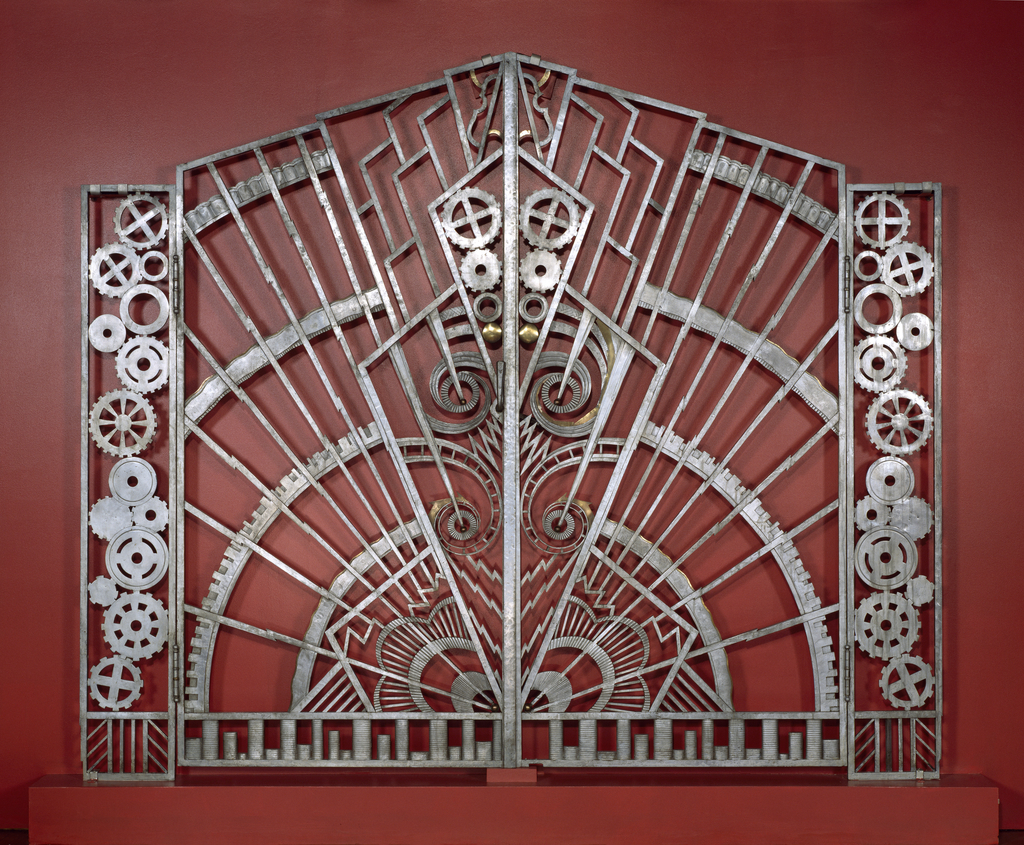Originally designed and installed in the entrance to the executive office suite of the Chanin Building, this finely crafted pair of gates provide an excellent example of the important role metalwork played in defining the Art Deco style of New York skyscrapers and other buildings built from the mid-1920’s into the early 1940’s. American sculptor Rene Paul Chambellan created the bronze gates for Irwin Chanin, an architect, designer, and real-estate developer whose vision for the building reflected his own optimism about capitalism, democracy, New York City and America. 1
Chambellan’s gates are dynamically constructed: a ninety-inch wide span of wrought iron and bronze designed with geometric decoration including narrow rectangular sections of irregularly stacked cogwheels, trapezoidal sections with radiating arcs, and a segmented border depicting stacks of coins. Overall, Chambellan’s gates exude a wonderful energy and sense of motion. You can almost imagine the lightning bolt-like forms and zigzag lines racing up and down the gates, the rise and fall of the coins and the turning of the cogwheels!
This pair of gates has inspired me to think about my own experience living in New York City in the twenty-first century. The saying, “If you can make it here you can make it anywhere,” rings true for this transplanted New Yorker. I often grapple with the city’s energy that can be electrifying and inspiring, but at other times overwhelming and exhausting. Today’s world is so fast paced, from the internet that provides us with information at lighting speed, to the nation’s constant state of economic change. Therefore, I believe Chambellan’s gates are timeless and that he has created a portal for both Chanin’s vision of the American Dream in 1928 and what it has become almost a century later.
Donated by the Chanin family, these gates became part of Cooper-Hewitt’s permanent collection in 1993. The gates have been featured in the Museum’s 1998 exhibit, “Opening Our Doors” and in traveling exhibitions across the world including the Suntory Museum in Osaka, Japan; the Victoria and Albert Museum in London, England; and the Royal Ontario Museum in Toronto, Canada.
1 Pilgrim, Dianne H. “The Chanin Gates.” The Magazine Antiques. January 1997: 224-225. Print.
